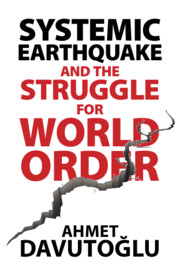Book contents
- Systemic Earthquake and the Struggle for World Order
- Systemic Earthquake and the Struggle for World Order
- Copyright page
- Dedication
- Contents
- Foreword
- Acknowledgments
- Abbreviations
- Introduction: Conceptual and Methodological Framework
- Part I Systemic Earthquake: Analysis and Consequences of World (Dis)Order
- 1 Traditional, Modern, and Global “World Orders”
- 2 The Roots of World (Dis)Order: Geopolitical, Security, Economic, and Structural Earthquakes in the Post-Cold War Era
- 3 Systemic Earthquake: Fragile National, Regional, and Global Structures
- 4 Systemic Earthquake: Global Powers and the “Multiple Balances of Power” System
- Part II A New Vision: Inclusive Governance
- Notes
- Bibliography
- Index
2 - The Roots of World (Dis)Order: Geopolitical, Security, Economic, and Structural Earthquakes in the Post-Cold War Era
from Part I - Systemic Earthquake: Analysis and Consequences of World (Dis)Order
Published online by Cambridge University Press: 09 January 2020
- Systemic Earthquake and the Struggle for World Order
- Systemic Earthquake and the Struggle for World Order
- Copyright page
- Dedication
- Contents
- Foreword
- Acknowledgments
- Abbreviations
- Introduction: Conceptual and Methodological Framework
- Part I Systemic Earthquake: Analysis and Consequences of World (Dis)Order
- 1 Traditional, Modern, and Global “World Orders”
- 2 The Roots of World (Dis)Order: Geopolitical, Security, Economic, and Structural Earthquakes in the Post-Cold War Era
- 3 Systemic Earthquake: Fragile National, Regional, and Global Structures
- 4 Systemic Earthquake: Global Powers and the “Multiple Balances of Power” System
- Part II A New Vision: Inclusive Governance
- Notes
- Bibliography
- Index
Summary
In terms of being able to grasp the scale and scope of the systemic earthquake we are experiencing today, it is crucial to gain an understanding of the spiral of ongoing crises and aftershocks in the wake of the geopolitical (with the dissolution of the Soviet Union, 1991) security (post- 9/11, 2001), economic (with the global economic crisis, 2008) and structural (Arab Spring, 2011) earthquakes of the post-Cold War era. The international order today is subject to the impact not of a single process, but rather a number of intertwined processes.
Although the starting dates of these periods/processes are chronologically sequential, there is no neat sequence in which one ends and another begins. Rather, the ongoing impact of each maintains its individual effect as well as triggering more complex developments that impact one another.
From this perspective in the second chapter of the book the geopolitical, security, economic and structural earthquakes that have generated a spiral of crises in the post-Cold War period that have laid the ground for the chaotic environment of today are analysed.
Keywords
- Type
- Chapter
- Information
- Systemic Earthquake and the Struggle for World OrderExclusive Populism versus Inclusive Democracy, pp. 46 - 67Publisher: Cambridge University PressPrint publication year: 2020
- 1
- Cited by

